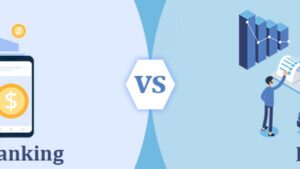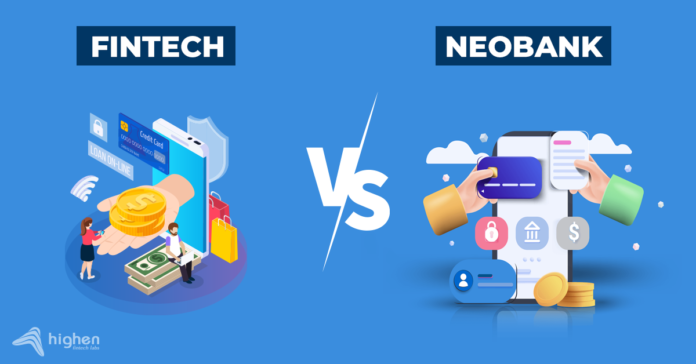In today’s financial landscape, the emergence of financial technology, or fintech, has disrupted traditional banking models. This article delves into the differences between fintech and traditional banking, their respective advantages, challenges, and the potential for integration.
Fintech vs bank
In the realm of modern finance, the distinction between fintech and traditional banking institutions has become increasingly pronounced. Fintech, short for financial technology, represents a wave of innovation that leverages cutting-edge technologies to revolutionize financial services. These technologies encompass a wide range of applications, including mobile banking apps, peer-to-peer lending platforms, robo-advisors, and blockchain-based payment systems. Fintech companies often operate with agility and flexibility, unencumbered by the legacy systems and bureaucratic processes that can characterize traditional banks.
On the other hand, traditional banks have long been the cornerstone of the financial system, offering a wide array of services such as savings accounts, loans, and investment products. While banks may lack the same level of innovation and agility as fintech startups, they often possess deep-rooted trust and stability built over decades of operation. Additionally, banks typically have extensive physical branch networks, providing customers with in-person support and a sense of security.
In summary, while fintech companies excel in innovation and efficiency, traditional banks offer stability and a longstanding reputation. The ongoing competition between these two sectors has led to a dynamic landscape in which customers benefit from a diverse range of financial services tailored to their needs and preferences.
Understanding Fintech

Definition
Fintech refers to innovative technology-driven solutions that aim to improve and automate the delivery of financial services. It incorporates a great many applications, including portable banking, shared loaning, robo-counselors, and blockchain-based digital forms of money.
Examples
Examples of fintech companies include PayPal, Square, Robinhood, and Revolut, each offering unique financial services tailored to meet the evolving needs of consumers and businesses.
Traditional Banking Overview
Role
Traditional banking institutions, such as commercial banks, have long been the cornerstone of the financial system, providing essential services such as deposit accounts, loans, mortgages, and investment products.
Services Offered
Traditional banks offer a comprehensive suite of financial services, backed by physical branches, ATMs, and a network of banking professionals to assist customers with their financial needs.
Differences Between Fintech and Traditional Banking
Technology
Fintech companies leverage cutting-edge technologies such as artificial intelligence, machine learning, and blockchain to deliver innovative financial solutions, often through digital platforms and mobile applications. In contrast, traditional banks rely on legacy systems and may face challenges in adopting new technologies.
Customer Experience
Fintech firms prioritize user-centric design and seamless digital experiences, offering convenient, accessible, and personalized services tailored to individual preferences. Traditional banks, while offering in-person assistance and personalized advice, may struggle to match the convenience and efficiency of fintech platforms.
Regulation
Traditional banks are subject to stringent regulatory requirements designed to ensure financial stability, consumer protection, and compliance with anti-money laundering (AML) and know-your-customer (KYC) regulations. Fintech companies, while also subject to regulation, may benefit from more flexible regulatory frameworks conducive to innovation.
Advantages of Fintech
Innovation
Fintech companies are at the forefront of innovation, continuously developing new technologies and business models to address emerging market trends and consumer demands.
Accessibility
Fintech platforms offer greater accessibility and inclusivity, reaching underserved populations and providing financial services to individuals who may have limited access to traditional banking infrastructure.
Cost-Efficiency
Fintech solutions are often more cost-effective than traditional banking services, with lower fees, reduced overhead costs, and streamlined processes enabled by automation and digitalization.
Advantages of Traditional Banking
Established Trust
Traditional banks have a long history of trust and reliability, backed by regulatory oversight, depositor insurance, and established brand recognition.
Physical Presence
Traditional banks offer the advantage of physical branches and ATMs, providing face-to-face interactions, in-person assistance, and access to cash services.
Comprehensive Services
Traditional banks offer a wide range of financial products and services under one roof, including savings accounts, checking accounts, loans, investment options, and wealth management services.
Challenges and Limitations
Security Concerns
Fintech platforms face cybersecurity risks such as data breaches, identity theft, and fraud, necessitating robust security measures and ongoing risk management efforts.
Regulatory Compliance
Fintech companies must navigate complex regulatory environments, comply with licensing requirements, and adhere to data privacy regulations, which can pose challenges, especially for startups and smaller firms.
Customer Trust
Establishing trust and credibility is crucial for fintech companies, especially in industries with high levels of consumer skepticism or regulatory scrutiny.
Integration of Fintech and Traditional Banking
The future of finance lies in the integration of fintech innovation with traditional banking infrastructure, leveraging the strengths of both models to deliver enhanced value and customer experiences.
Future Outlook
As technology continues to advance and consumer preferences evolve, the financial services industry will undergo further transformation, with collaboration, innovation, and customer-centricity driving progress.
Conclusion
In conclusion, the dynamics between fintech vs bank and traditional banking reflect the ongoing evolution of the financial services landscape. While fintech vs bank offers innovation, accessibility, and cost-efficiency, traditional banking institutions provide trust, stability, and comprehensive services. The coexistence and integration of these models hold the key to unlocking the full potential of finance in the digital age.
FAQs about Fintech and Traditional Banking
- Can fintech companies replace traditional banks entirely?
- While fintech vs bank companies offer innovative solutions, traditional banks continue to play a vital role in the financial ecosystem, particularly in areas such as regulatory compliance, risk management, and customer trust.
- Are fintech vs bank platforms safe to use?
- Fintech platforms implement robust security measures to protect user data and transactions. However, users should exercise caution and follow best practices for online security, such as using strong passwords and enabling two-factor authentication.
- How can traditional banks embrace fintech vs bank innovation?
- Traditional banks can collaborate with fintech vs bank startups, invest in technology infrastructure, and prioritize digital transformation initiatives to harness the benefits of fintech vs bank innovation while leveraging their existing strengths.
- What are some examples of fintech vs bank services?
- Fintech services encompass a wide range of offerings, including digital banking, peer-to-peer lending, crowdfunding, payment processing, robo-advisory services, and blockchain-based cryptocurrencies.
- How can consumers benefit from the integration of fintech vs bank and traditional banking?
- The integration of fintech vs bank and traditional banking can result in improved accessibility, enhanced user experiences, greater choice of financial products and services, and increased efficiency in managing personal finances.

